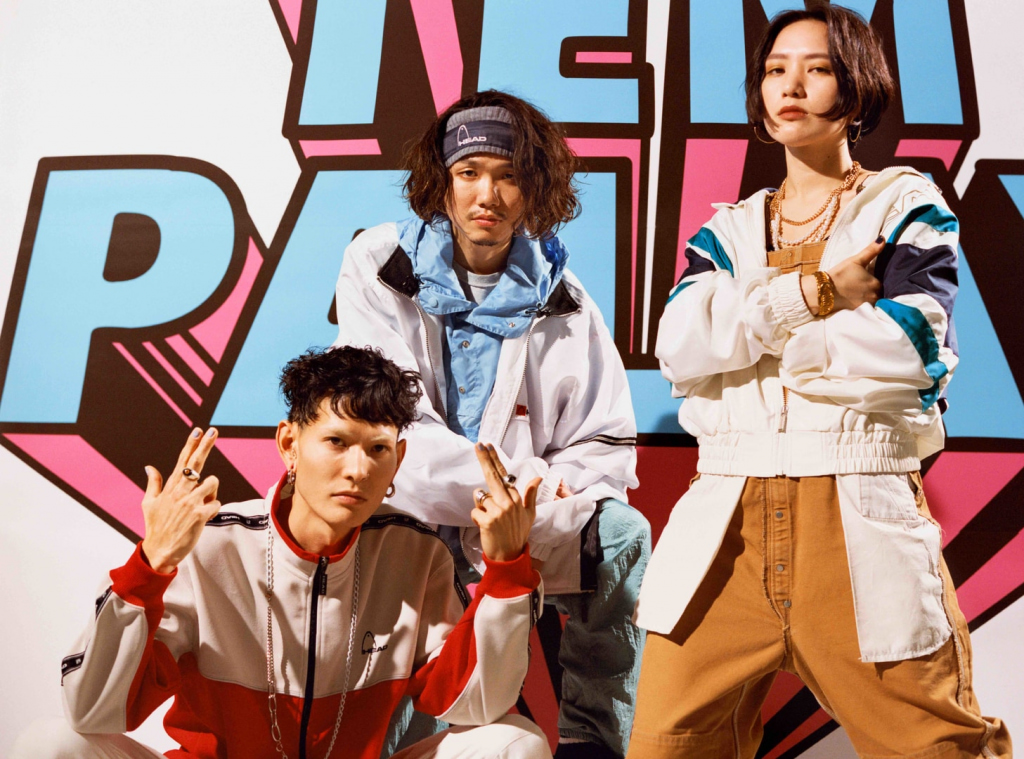It’s been a busy spring for great new Japanese music. Hip hop has continued to push ahead with top-notch releases by the likes of Tohji, Punpee and JP the Wavy. We’ve seen big-name indie works from Yuta Orisaka, Ayano Kaneko and Mitsume. And, of course, there’s been plenty to note on the more experimental side of things, with Merzbow releasing a long-awaited collaboration with American producer Prurient, post-punkers Ms. Machine unveiling their hammering debut, and IDM producer dok-s project adding another work of playful, clever electronica to his canon.
On top of all those, here are my top album picks from the past few months.
1. Tempalay, Ghost Album
(unBORDE)
Take a peek at Tempalay’s webpage, social media accounts and album covers, you’d know they were a psych band. There’s enough garish, flashing images and optical illusions to knock you back, leave you dazed. Squint hard at the cover of their latest release, Ghost Album, you’ll see a pattern of cartoon babies – I’m not sure what the point of it all is, but Tempalay’s aesthetic is ticking all the psych PR boxes.
Despite that barrage of tropes, Tempalay’s music actually steers clear of the usual psych clichés. Ghost Album is the trio’s first record on major label unBORDE (but fourth overall), their first in proper hi-fi sound, and it sees them develop further their brand of psychedelic pop.
Most impressive is just how finely Tempalay fit their hazy, textured oddity into a more refined, radio-ready sound. The group haven’t watered-down their eccentricities but taken the opportunity to refine their balance of pop and psych, to inject clear, quirky thrill into very pretty, melodic pop tunes. The result is easily their finest work yet – Ghost Album is accessible, well-crafted psychedelia.
2. Kukurihime no Mikoto, Ha ga Tokeru Yume
(Omoide)
If synthetic dreams were real, they’d sound something like Ha ga Tokeru Yume [Dreams of Melting Teeth, or something like that]. Mixing vapourwave, hip hop and art pop, its flickering beams of techy nostalgia are surreal in their dreaminess, but also in their mechanical unreality.
Tokeru Yume is the debut release from Kukurihime no Mikoto, a duo of rapper Origami_Original and instrumentalist Yoshi Okimura. From her deadpan, flat rattling to entire tracks of softly-belted ballads, Origami_Original is a versatile vocalist; while Okimura, otherwise known as the long-time guitarist of jazzy modern prog rock outfit henrytennis, is comfortable distanced from his prog roots.
At various points, Tokeru Yume takes influence from videogame music, techno and electro. Throughout, however, vapourwave is the defining feature. I rarely hear vapourwave influence so prominently in such energetic pop music; it makes Tokeru Yume an eerie, dystopian listen, even when much of the rest of the record – Origami_Original’s aloof delivery, the mini synth hooks, bouncing synthesised horns – is brilliant fun.
3. Kumi Takahara, See-Through
(Flau)
Kumi Takahara apparently recorded the demos for See-Through in her own bathroom, balancing her laptop on a washing machine, with a microphone set up above the sink and using towels to absorb sound. The field samples were recorded on her iPhone – and this can all sort of, indirectly (and sometimes directly), be heard in the very personal nature of her music.
Takahara’s debut, See-Through is a modern classical work that sketches out solitary moods and memories across expansive beds of sound. Masterfully controlled and crafted, it’s most endearing for the amount that Takahara herself saturates the recording. Playful, dreamy, tender – but momentous, too, each moment feels expressive or contemplative, inspired by a particular mood or story.
And that isn’t the entirety of See-Through’s appeal. Takahara’s textures are weathered and measured. Her field samples are airy and cushioning. She manages the appeal of dramatic peaks of tracks like “Chant”, “Tide” and “Log” with ease. As debuts go, they don’t get much more accomplished than See-Through.
4. S.L.N.M sarunome
(S.L.N.M / Sube no Ana)
The misanthropic chaos of each element of S.L.N.M’s music offers a great insight into the breadth of contemporary experimental hip hop. Here you have three MCs (Yukitero, Miya-z and Nyaomi) working with Shin Wada, a beatmaker known not for hip hop but for his industrial, noise and ambient music. All those forces combined, the Kansai rap collective’s tunes aren’t like much else: hardcore hip hop and rap-metal crossed with elements of neo-soul, dance music, jazz, glitch and much more.
sarunome is the group’s debut EP, a swift six tracks and 17 minutes. But it’s dense. Really dense. There are so many influences that twist around each other, almost all of the time, that S.L.N.M’s tracks are frequently overwhelming – messing with your brain in all the best ways. Between the three vocalists, there’s hoarse screaming, yelled rapping, rapid flows and plenty of soulful hooks. Shin Wada, meanwhile, does his best to confuse things further, each track entertaining a new take on S.L.N.M’s noisy, pacey, slightly demented hip hop.
But oddly, despite such unremitting, concerted chaos, sarunome pulls together really well. It’s a great example of modern hip hop artists demonstrating the breadth of their tastes and influences, and combining it all into a fascinating, fresh work of genre rebellion.
5. Wata Igarashi, New Dawn
(FIGURE)
In the last few years, Wata Igarashi has built himself a reputation for a certain style of hectic, psychedelic techno. New Dawn is the latest instalment in this vein, another work in which everything Igarashi emits swarms and pulses, primed for peaks on an enormous scale.
Driving, controlled, intense, the four pieces here are intoxicating in their mix of euphoric, driving beats and blustering, chaotic textures. Caught in the mid-track ecstasy of one of Igarashi’s immaculately built constructions, one can only marvel at the detail, momentum and singularity of his vision of dance music.









